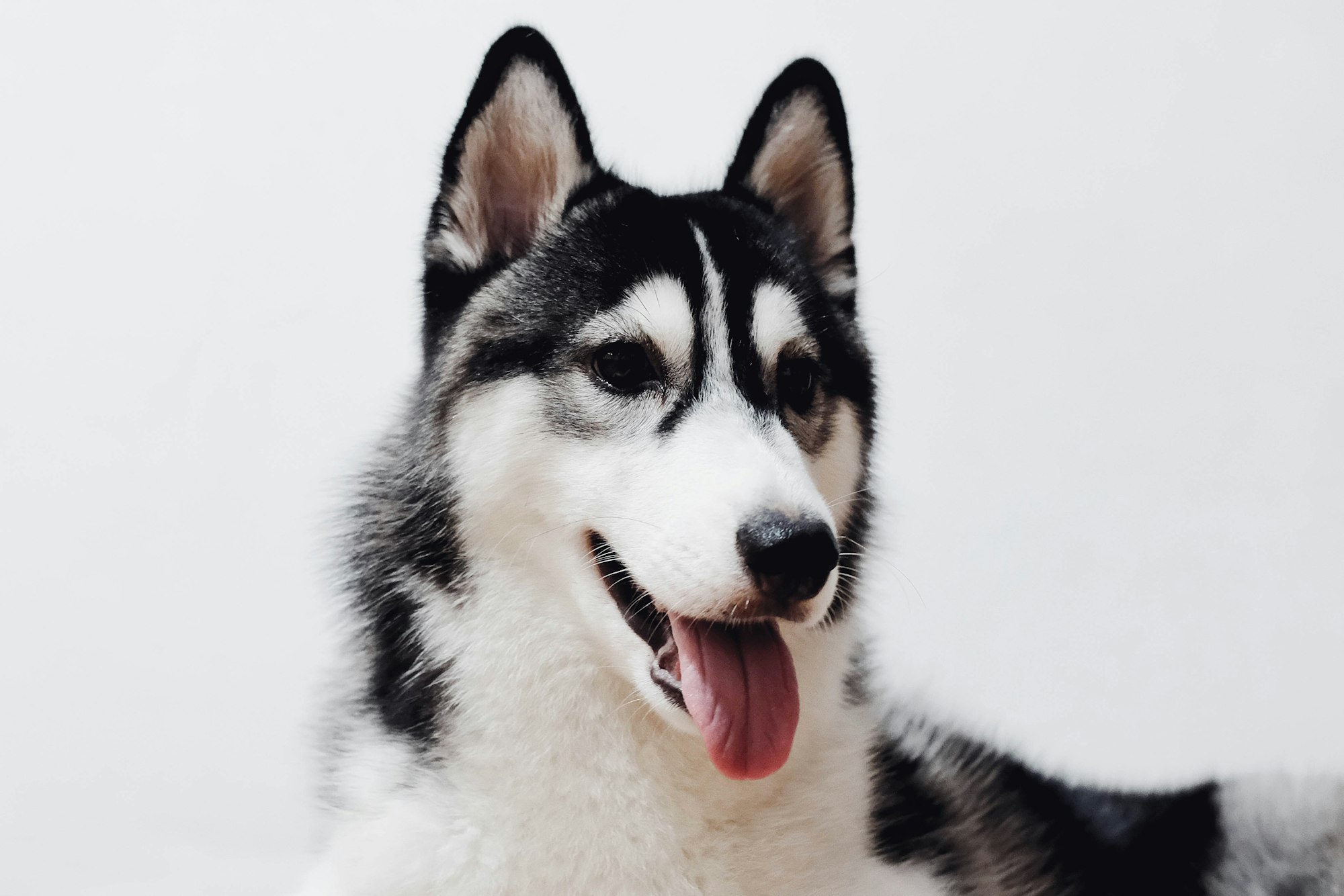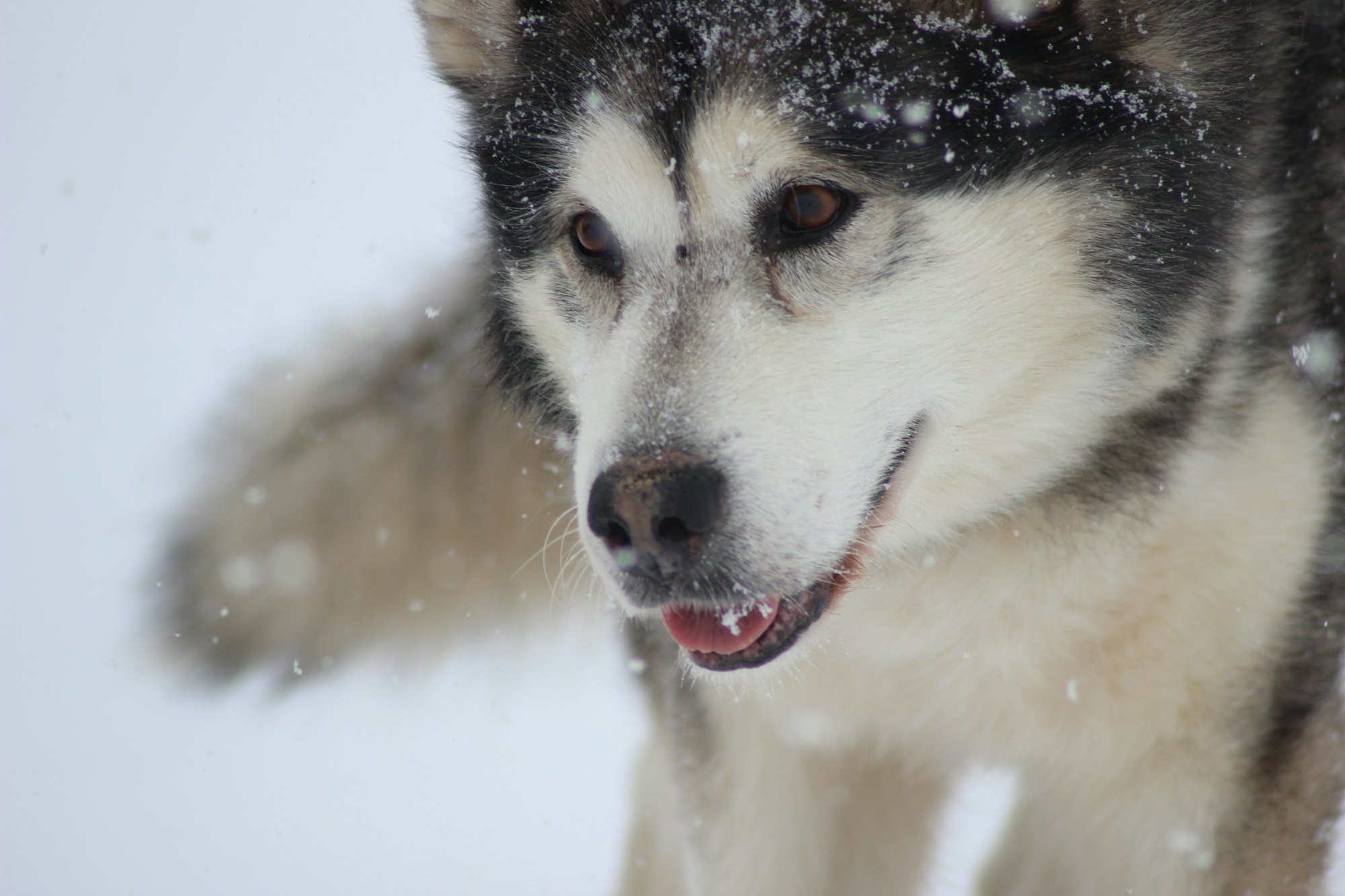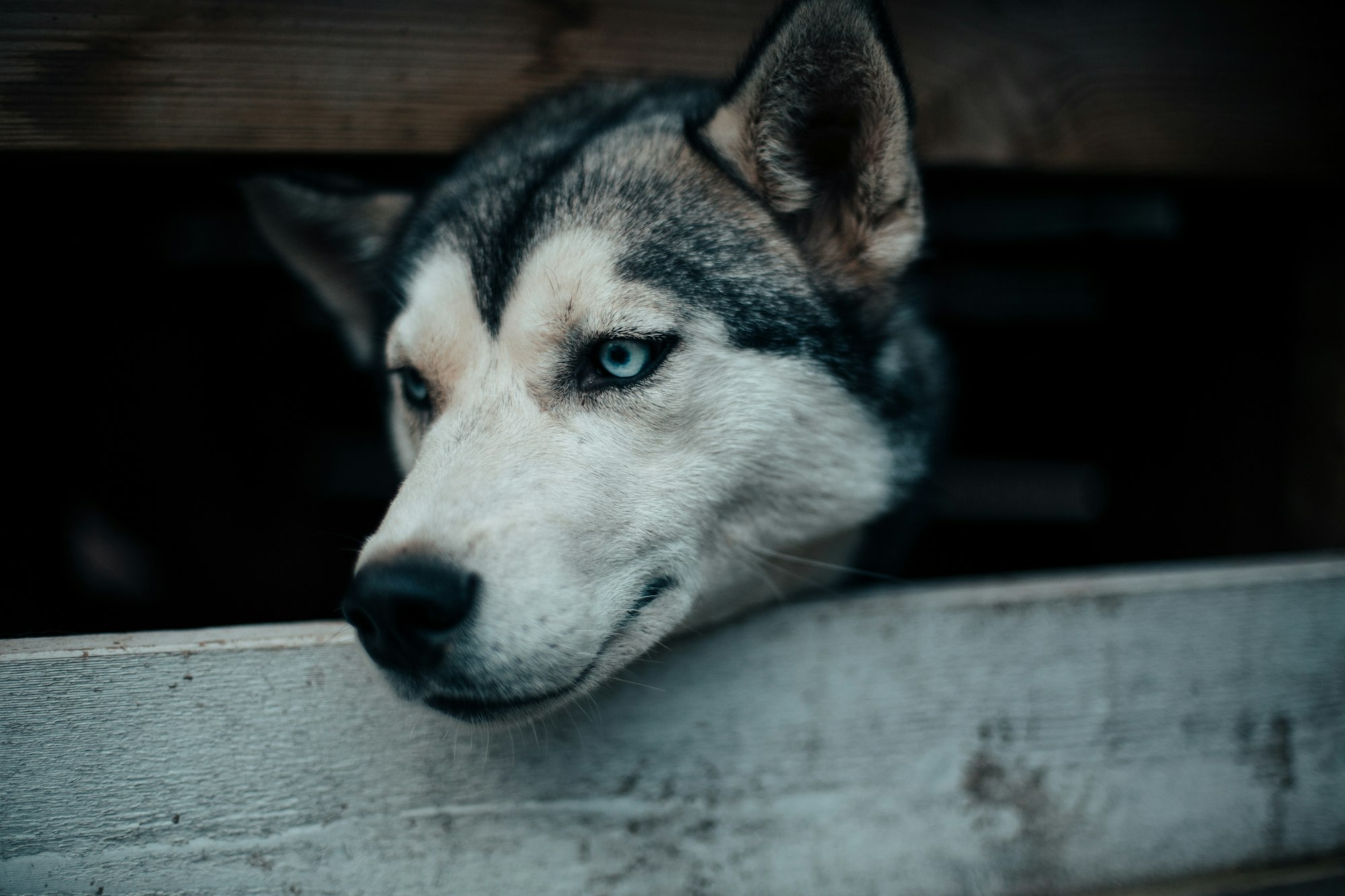Alaskan Malamutes are a majestic breed of dogs that are known for their strength, loyalty, and work ethic. However, some people may wonder if they are aggressive dogs. This is a common question that arises when considering getting an Alaskan Malamute as a pet. In this article, we will explore whether or not Alaskan Malamutes are aggressive and what factors may contribute to their behavior.

To start, it is important to note that aggression in dogs is not breed-specific. Any dog, regardless of breed, can exhibit aggressive behavior if not trained and socialized properly. However, some breeds may have a higher tendency towards aggression due to their genetics and history of breeding. Alaskan Malamutes are not typically bred for aggression, but rather for their working abilities in cold weather conditions. Nonetheless, it is still important to understand the temperament and behavior of this breed to determine if it is a good fit for your lifestyle.
Alaskan Malamute Temperament
Alaskan Malamutes are known for their friendly and playful nature. They are loyal, affectionate, and highly intelligent dogs that make great companions. However, like all dogs, their temperament can vary depending on their upbringing, socialization, and training.

Malamutes are generally not aggressive towards humans. They are known to be good with children and make excellent family pets. However, they are instinctively protective of their family and can be wary of strangers. Proper socialization and training can help prevent any potential aggression towards strangers.
Malamutes are also known for their high prey drive, which can make them aggressive towards smaller animals such as cats or rabbits. It is important to supervise them around smaller animals and to provide proper training to prevent any unwanted behavior.
Overall, Alaskan Malamutes have a friendly and playful temperament, but like all dogs, they require proper socialization and training to ensure they are well-behaved and safe around others.
Factors Influencing Aggression
Alaskan Malamutes are generally friendly and affectionate dogs, but like any other breed, they can display aggressive behavior under certain circumstances. Understanding the factors that influence aggression in Alaskan Malamutes can help owners prevent and manage aggressive behavior.
Training and Socialization
Training and socialization are crucial factors that determine the temperament of a dog. Alaskan Malamutes that are not properly trained and socialized can become aggressive towards people and other animals. Owners should start training and socialization at an early age and continue throughout the dog's life. Positive reinforcement techniques, such as treats and praise, are effective in training Alaskan Malamutes.
Genetics and Breeding
Genetics and breeding play a significant role in the temperament of a dog. Alaskan Malamutes that are bred from aggressive parents are more likely to display aggressive behavior. Responsible breeders should screen their breeding dogs for genetic disorders and temperament issues to ensure that their puppies have a good temperament.
Environment and Stimuli
Environmental factors and stimuli can also influence the aggression of Alaskan Malamutes. Dogs that are kept in a stressful or chaotic environment are more likely to display aggressive behavior. Loud noises, unfamiliar people, and other animals can also trigger aggressive behavior in Alaskan Malamutes. Owners should provide a calm and stable environment for their dogs and avoid exposing them to stressful stimuli.
In conclusion, several factors can influence the aggression of Alaskan Malamutes. Proper training and socialization, responsible breeding practices, and a calm environment can help prevent and manage aggressive behavior in this breed.
Recognizing Aggressive Behavior
Alaskan Malamutes are known for their friendly and outgoing nature, but like all dogs, they can exhibit aggressive behavior if provoked or threatened. It is important for owners and handlers to be able to recognize the signs of aggression to prevent any potential harm.
One of the most common signs of aggression in Alaskan Malamutes is growling. This low, rumbling sound is often accompanied by bared teeth and a raised hackle. It is a warning sign that the dog is feeling threatened or uncomfortable and should be approached with caution.
Another sign of aggression is snapping or biting. This can occur when the dog feels cornered or trapped, or when it perceives a threat to its territory or family. It is important to teach Alaskan Malamutes proper socialization and training to prevent these behaviors from developing.
Body language is also an important indicator of aggression in Alaskan Malamutes. A stiff, rigid posture and direct eye contact can be signs of a dog feeling threatened or aggressive. Conversely, a relaxed, loose body and wagging tail can indicate a friendly and non-aggressive demeanor.
It is important for owners and handlers to be aware of their Alaskan Malamute's body language and behavior to prevent any potential aggressive incidents. Early intervention and proper training can help prevent aggressive behavior from developing and ensure a happy and healthy relationship between dog and owner.
Preventing Aggression
Alaskan Malamutes are generally not aggressive, but like any dog breed, they can become aggressive if they are not properly trained and socialized. Here are some tips to prevent aggression in Alaskan Malamutes.
Proper Training Techniques
Training is essential to prevent aggression in Alaskan Malamutes. Positive reinforcement techniques such as treats, praise, and toys can be used to train Alaskan Malamutes. It is important to start training at an early age and to be consistent with training. Alaskan Malamutes respond well to training that is fun and engaging.

Socialization and Exposure
Socialization and exposure are important to prevent aggression in Alaskan Malamutes. Alaskan Malamutes should be exposed to different people, animals, and environments from an early age. This will help them to become well-adjusted and confident dogs. Socialization should continue throughout the dog's life.
Managing the Environment
Managing the environment is important to prevent aggression in Alaskan Malamutes. Alaskan Malamutes should be kept in a secure area to prevent them from escaping and getting into fights with other dogs or animals. They should also be supervised when around children and other pets. It is important to keep them on a leash when in public places.
By following these tips, owners can prevent aggression in Alaskan Malamutes. Proper training, socialization, and managing the environment can help Alaskan Malamutes become well-adjusted and confident dogs.
Dealing with Aggression
Alaskan Malamutes are known for their strong-willed and independent nature, which can sometimes result in aggressive behavior. It is important for owners to understand how to deal with aggression in their dogs to prevent any potential harm to themselves or others.
Professional Training and Behavior Modification
Professional training and behavior modification can be effective in reducing aggression in Alaskan Malamutes. Owners should seek the help of a certified dog trainer or behaviorist who has experience working with this breed. The trainer can assess the dog's behavior and develop a customized training plan to address the specific issues.
Training should focus on positive reinforcement techniques, such as rewarding good behavior and ignoring bad behavior. Punishment or negative reinforcement can actually worsen aggressive behavior in Alaskan Malamutes.
Safety Measures and Responsible Ownership
Owners of Alaskan Malamutes must take responsibility for their dog's behavior and take appropriate safety measures to prevent any potential harm. This includes keeping the dog on a leash or in a secure fenced area when outside, and supervising interactions with other people and animals.
Owners should also be aware of their dog's triggers for aggression, such as food or toys, and take steps to avoid situations that may lead to aggressive behavior. It is important to socialize Alaskan Malamutes from a young age to help them develop positive relationships with people and other animals.
In conclusion, dealing with aggression in Alaskan Malamutes requires a combination of professional training and responsible ownership. By understanding the breed's behavior and taking appropriate safety measures, owners can help prevent any potential harm and ensure a happy and healthy life for their dog.
Alaskan Malamute Bite Statistics
Alaskan Malamutes are a large and powerful breed of dog that were originally bred for sled pulling and transportation in the harsh Arctic environment. While they are known for their loyalty and affectionate nature, some people may wonder if they are aggressive or have a tendency to bite.
According to a study conducted by the American Veterinary Medical Association, the Alaskan Malamute is not one of the top breeds that are reported to bite. In fact, they are ranked 67th out of 79 breeds, with a reported bite rate of 0.5%. This is significantly lower than breeds such as the Chihuahua and Dachshund, which have a higher bite rate.
It is important to note that any dog has the potential to bite, regardless of breed. However, proper training, socialization, and responsible ownership can greatly reduce the risk of a dog biting. It is also important to teach children how to interact with dogs safely and to never leave a child unsupervised with a dog.

In conclusion, while the Alaskan Malamute is a large and powerful breed, they are not known for being aggressive or having a high tendency to bite. As with any dog, it is important to provide proper training, socialization, and responsible ownership to ensure a happy and safe relationship between the dog and their human family.
Comparison with Other Breeds
When it comes to aggression, the Alaskan Malamute is often compared to other breeds. Here are a few comparisons:
- Siberian Husky: Both the Alaskan Malamute and the Siberian Husky are sled dogs and have similar temperaments. However, the Siberian Husky is generally more sociable towards strangers and other animals, while the Alaskan Malamute can be more reserved and protective of its family.
- German Shepherd: The German Shepherd is known for its loyalty and protectiveness, but can also be aggressive towards strangers and other animals. However, with proper training and socialization, German Shepherds can be well-behaved and obedient.
- Pit Bull: Pit Bulls have a reputation for being aggressive, but this is largely due to irresponsible breeding and training. When raised and trained properly, Pit Bulls can be loyal and affectionate pets. However, they do have a strong prey drive and may not be suitable for homes with small animals.
Overall, it's important to remember that aggression is not a breed-specific trait and can be influenced by a variety of factors, including genetics, upbringing, and training. While the Alaskan Malamute can be protective of its family, it is not inherently aggressive and can make a loyal and loving companion with proper care and training.
Legal and Insurance Considerations
When considering adopting an Alaskan Malamute, it is important to be aware of the legal and insurance considerations that come with owning a potentially aggressive breed.
In some areas, owning an Alaskan Malamute may require a special permit or license. It is important to research local laws and regulations before bringing one into your home.
Additionally, insurance companies may view Alaskan Malamutes as a liability and may require special coverage or exclude them from coverage altogether. It is important to check with your insurance provider to understand their policies and any potential costs associated with owning this breed.
Owners of Alaskan Malamutes should also take steps to prevent their dogs from causing harm to others. This includes proper socialization and training, as well as ensuring that their dog is securely contained when in public or around unfamiliar people or animals.
While Alaskan Malamutes can make wonderful pets, it is important to understand the legal and insurance considerations that come with owning a potentially aggressive breed. By being aware of these factors and taking appropriate precautions, owners can help ensure the safety of their dogs and those around them.

Frequently Asked Questions
- Do Alaskan Malamutes exhibit aggression towards other dogs?
- Alaskan Malamutes are known to be strong-willed and independent dogs. They have a high prey drive and may exhibit aggression towards other dogs, especially those of the same sex. However, with proper socialization and training, they can learn to interact with other dogs in a friendly manner.
- Can Alaskan Malamutes be considered reliable guard dogs?
- While Alaskan Malamutes are large and intimidating, they are not typically considered reliable guard dogs. They are friendly and sociable with strangers, and their independent nature may make them less interested in protecting their territory.
- How do Alaskan Malamutes typically behave around humans?
- Alaskan Malamutes are known for their friendly and affectionate nature towards humans. They enjoy being around people and are often eager to please their owners. However, they may be reserved around strangers and take some time to warm up to new people.
- What is the temperament of Alaskan Malamutes with families?
- Alaskan Malamutes make great family pets and are known for their loyalty and devotion to their owners. They are gentle and patient with children, but as with any dog, should always be supervised when around young children.
- Are Alaskan Malamutes known to be friendly or hostile?
- Alaskan Malamutes are generally friendly and sociable dogs, but their behavior can vary depending on their individual personality and upbringing. With proper socialization and training, they can be excellent companions and family pets.
- Do Alaskan Malamutes have a history of being included on aggressive dog lists?
- Alaskan Malamutes are not typically included on aggressive dog lists, as they are not known to be inherently aggressive or dangerous. However, like any dog, they can exhibit aggressive behavior if they are not properly trained and socialized. It is important for owners to understand their dog's individual temperament and take steps to prevent any potential aggression.




